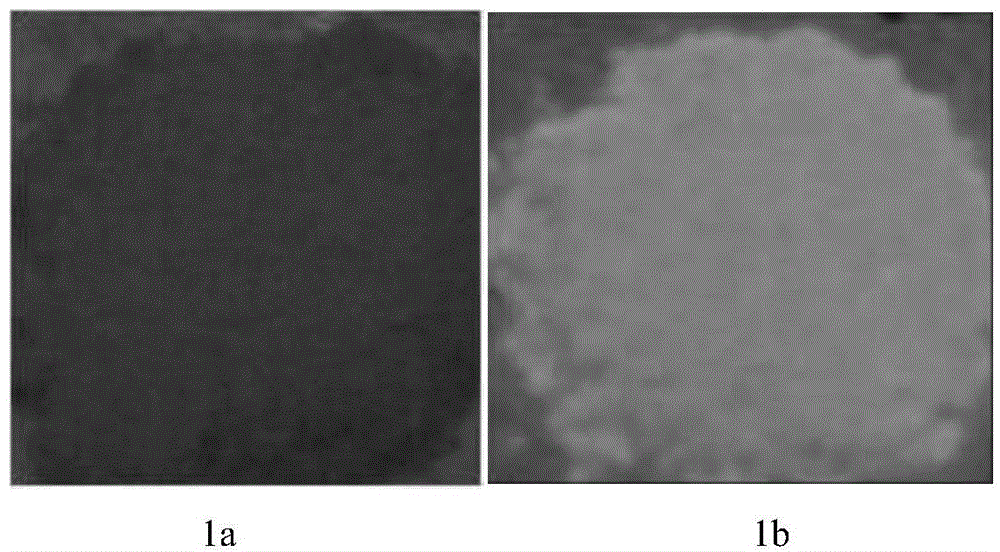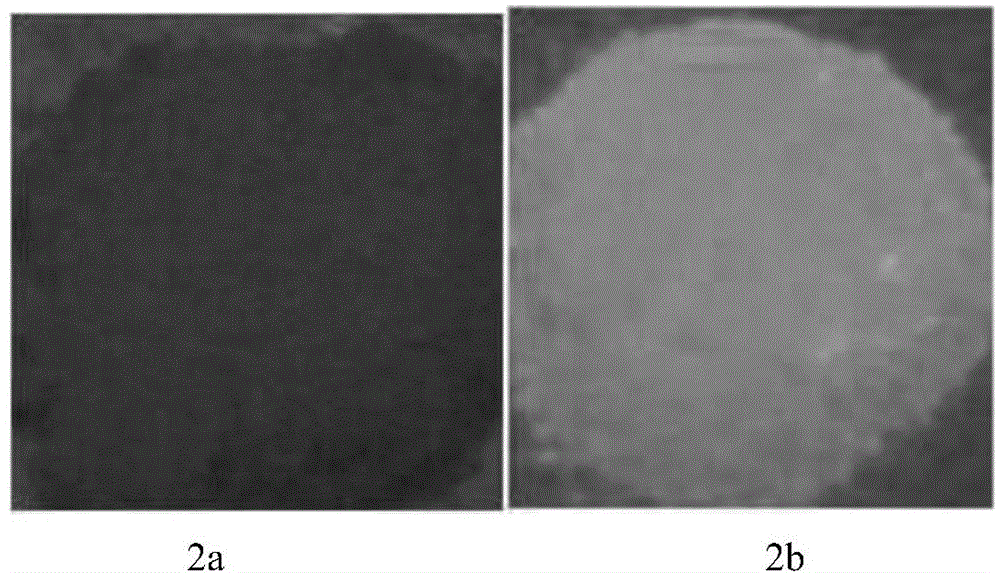Nano L-type zeolite light-emitting material containing double-rare-earth Eu<3+>/Tb<3+>-beta-dione complex and application thereof
A technology of luminescent materials and nano-zeolites, which is applied in the fields of luminescent materials, fluorescence/phosphorescence, material excitation analysis, etc., can solve the problems that the application value has not been fully utilized, light and heat are unstable, and there are few problems
- Summary
- Abstract
- Description
- Claims
- Application Information
AI Technical Summary
Problems solved by technology
Method used
Image
Examples
Embodiment 1
[0038] 1) Mix 400mg L-type nano zeolite with 0.1mol / L EuCl 3 ·6H 2 O ethanol solution 4ml and 0.1mol / L TbCl 3 ·6H 2 Put 6mL of ethanol solution of O into the reactor, react in an oil bath at 80°C for 24h, then centrifuge, wash and dry to obtain ion-exchanged zeolite, denoted as NZ-Eu 4 Tb 6 .
[0039] 2) After mixing and grinding the ion-exchanged zeolite obtained in the previous step with acetylacetone (acac), centrifuge washing and drying to obtain nano-zeolite containing luminescent rare earth organic ligands, denoted as NZ-Eu 4 Tb 6 -acac. Ln in nano zeolite can be obtained by titration 3+ (Eu 3+ and Tb 3+ The sum of total) mass percentage composition is 3.07%, the percentage composition that obtains acac by differential thermal analyzer is 4.17%.
[0040] 3) 200mg NZ-Eu 4 Tb 6 -acac is put into a vial, and the vial is placed in a beaker containing 2ml of triethylamine solvent, then the beaker is sealed, and the zeolite luminescent material NZ-Eu is treated wit...
Embodiment 2
[0043] Step (1) (2) is the same as embodiment 1
[0044] (3) Replace triethylamine with tert-butylamine, and obtain orange-red zeolite in the same way.
[0045] attached figure 2 a is the zeolite luminescent material NZ-Eu in this experiment 4 Tb 6 300nm UV lamp before -acac treatment with tert-butylamine vapor. Digital photographs below, attached figure 2 b is NZ-Eu 4 Tb 6 -Digital photograph of acac treated with tert-butylamine vapor under 300nm UV lamp. From attached figure 2 As can be seen, figure 1 a appears as a green powder, figure 1 b is orange red, indicating NZ-Eu 4 Tb 6After -acac was treated with tert-butylamine vapor, the emission color changed from green to orange-red. Figure 5 Zeolite luminescent material NZ-Eu 4 Tb 6 The ratio (I Eu / I Tb ) histogram. From attached Figure 5 As can be seen, the ratio (I Eu / I Tb ) is 3.1.
Embodiment 3
[0047] Step (1) (2) is the same as embodiment 1
[0048] (3) Replace triethylamine with n-butylamine, and obtain yellow zeolite in the same way.
[0049] NZ-Eu 4 Tb 6 After -acac was treated with n-butylamine vapor, the emission color changed from green to yellow. Figure 5 Zeolite luminescent material NZ-Eu 4 Tb 6 The ratio (I Eu / I Tb ) histogram. From attached Figure 5 As can be seen, the ratio (I Eu / I Tb ) is 2.1.
PUM
 Login to View More
Login to View More Abstract
Description
Claims
Application Information
 Login to View More
Login to View More - R&D
- Intellectual Property
- Life Sciences
- Materials
- Tech Scout
- Unparalleled Data Quality
- Higher Quality Content
- 60% Fewer Hallucinations
Browse by: Latest US Patents, China's latest patents, Technical Efficacy Thesaurus, Application Domain, Technology Topic, Popular Technical Reports.
© 2025 PatSnap. All rights reserved.Legal|Privacy policy|Modern Slavery Act Transparency Statement|Sitemap|About US| Contact US: help@patsnap.com



